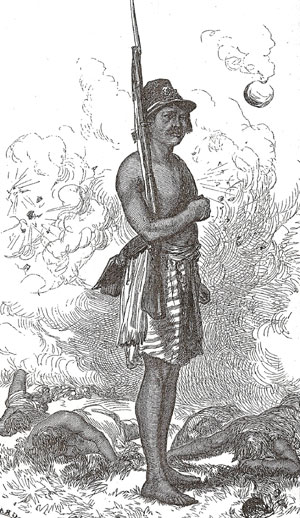Jonathan Nugent
The Right Stuff
June 30, 2016
In the year 1870, Paraguay lay in ruins. Six years earlier, over 500,000 souls populated this landlocked South American country. But, after it’s defeat in the War of the Triple Alliance, it now counted just over 200,000, only around 28,000 of whom were men.
Paraguay was all but wiped out. They had fought long and hard but the combined forces of Brazil, Argentina, and Uruguay were too great. By the end, they were fighting in the jungle, conscripting young boys and fighting wielding nothing but antique muskets (and sticks in some instances) and wearing nothing but loincloths (very Alt-Right).
How does a population bounce back from that sort of catastrophe? According to records available to us (not many of which are, on account of the brutality of the war), they did so by changing their culture dramatically.
No conscious change took place in Paraguayan society in 1870. The returning soldiers did not sit in a conference room and decide on how to proceed. Their response was informed by nothing more than biology. The course they took was simply the innate response of a society when confronted with the destruction of its male population.
According to a Paraguayan newspaper after the war: “Men without modesty may be found even in the corridors of the Church and the cemetery, atrociously scandalising even during the day to satiate their brutal passions.” People were having sex in plazas, meeting places, and even priests were taking part.
Was it disgusting? Yes, on the face of it, of course it was. But Paraguay rebuilt. The society bears scars of the war today; in their language, culture, and their ethnic conflicts. But the point is that they managed to rebuild.
Imagine a slightly different scenario, a scenario wherein the Paraguayan dictator, Francisco Lopez, not only drafted men, but women too.
Imagine that the women of Paraguay were wiped out in the war too, as entirely as the men. Instead of being a war of national suicide figuratively, it would have literally been just that: the mass suicide of a population.
Lopez, while it is very likely he had a few screws loose, was not insane enough to draft the women of Paraguay. His last words after being tracked down by Brazilian troops and killed in battle were “I die with my country.” This would have been entirely true had the women of Paraguay been sent into battle.
As it was, it took decades for the population to recover, but it did. Men are expendable in that sense (sorry MRAs), in that a population can rebound after losing many of us. Not so with women, who are very limited in the number of children they can bear and the time during which they can bear them.
It is imperative, if–God forbid–we end up in our own “War of the Triple Alliance,” that we make sure that women are not sent into battle. No matter how dire the situation, this must not be allowed.
 Daily Stormer The Most Censored Publication in History
Daily Stormer The Most Censored Publication in History



